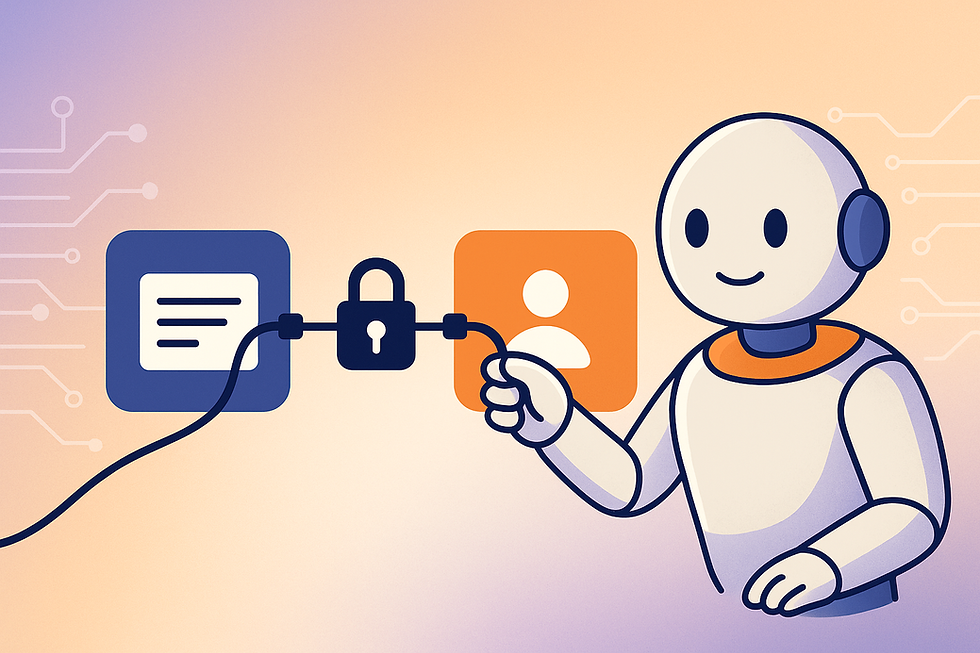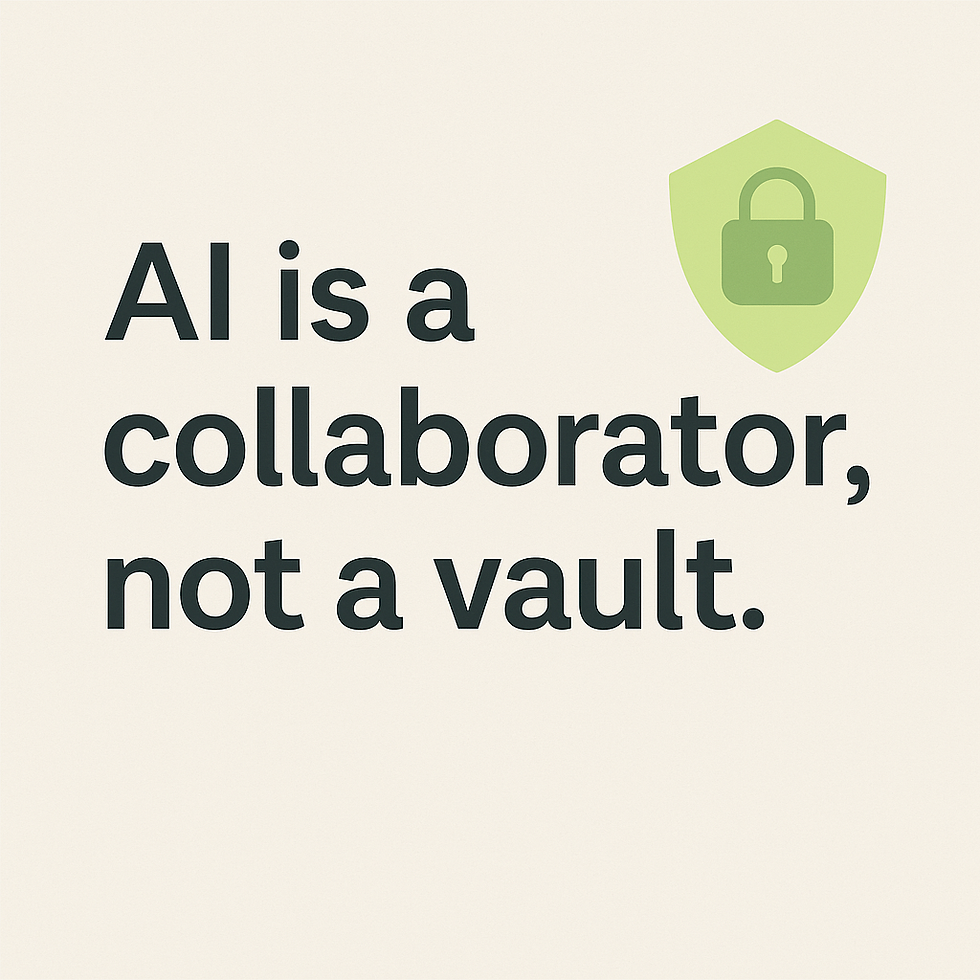When Claude Asked Me to Connect My Apps, I Paused. Here’s Why:
- Jennifer Leonard
- Aug 13
- 3 min read

When I logged into Claude recently, it popped up a new feature: “Want to connect your apps for deeper personalization?”
On the surface, that’s tempting. More context, better personalization, less explaining. But I didn’t click “Yes.”
I spent the first half of my career in the security space, and I know that “just connect your apps” can quietly open the wrong doors.
A Conversation That Stuck With Me
Not long ago, I was talking with an AI product manager who has a background in data architecture. We were trading thoughts on AI’s potential and its risks, and we both landed on the same analogy:
AI is the orchestra. But it needs a conductor.
They described their approach as “composing music on a privacy-first stage” where the instruments (AI models) are powerful, but the score (data policy) determines the quality and safety of the performance. The real work is deciding what data is worth bringing into the orchestra and making sure it never leaves the concert hall without permission.
I shared that I’ve hesitated to adopt new AI features that integrate with my apps. Not because I’m against innovation, but because giving an AI system access to all my files without tight guardrails is asking for trouble.
As a marketer, I also know customer data and insights are the lifeblood of personalization at scale and overall growth. That’s why I believe building a strong data foundation, even down to something as specific as a well-maintained data dictionary with team alignment, is critical.
You have to know which data across the customer journey is relevant and worth keeping if you want AI to produce meaningful, safe outputs.
How Claude’s Integrations Work
Claude now supports pre-built web connectors via Remote MCP for users on Pro, Max, Team, and Enterprise plans. These connectors make it possible to link Claude to tools like Asana, Notion, Linear, PayPal, Plaid, Intercom, Sentry, and more, without writing a single line of code.
Here’s how it works:
Connector Directory – In Claude’s Settings → Connectors, you can browse a list of available tools and connect them with just a few clicks.
Secure Authentication – Claude uses OAuth or similar flows to connect to each tool, following the permissions you grant (for example, certain files in Notion or task lists in Asana).
Custom Connectors – If you have specialized tools, you can build your own Remote MCP server to connect them, currently in beta for Pro and above.
Security Considerations – Anthropic advises only connecting services from trusted sources. Malicious or unverified MCP servers could expose your data, so reviewing permissions is essential.
The Danger of Easy Access Without Guardrails
AI integrations promise speed.
Pull the right docs into your workflow without searching for them.
Automatically draft with context built in.
Coordinate across tools without switching tabs.
But without constraints, that same convenience can lead to:
Data overexposure: AI seeing and possibly surfacing more than is necessary.
Compliance risks: Sensitive or regulated data being processed in ways that break rules.
Hallucinations and drift: AI pulling in irrelevant or incorrect details because the inputs weren’t scoped tightly.
My Three-Part Test for AI Safety and Accuracy
To make sure AI outputs match intent and stand up to the test of truth, I focus on:
Clean, well-labeled data so the model starts from facts, not noise.
Human-in-the-loop review to ensure alignment with brand, strategy, and ethics.
Clear guardrails and prompts so AI has both the right ingredients and the right recipe.
Quick Tips for Safer AI Integrations
If you’re thinking about trying app integrations, the best time to plan your guardrails is before turning them on. These simple steps can keep you productive without putting your data at risk:
Create a sandbox account for AI work that’s separate from personal or production data.
Use project-specific folders so the AI only has access to what’s relevant.
Connect only while working on the task, then disconnect right after.
Review activity logs to confirm the AI didn’t pull more than you intended.
For a clear, actionable reference and downloadable checklist, grab the AI Integration Safety Checklist PDF below. It’s a quick guide teams should have on hand before enabling any AI integration.



Comments